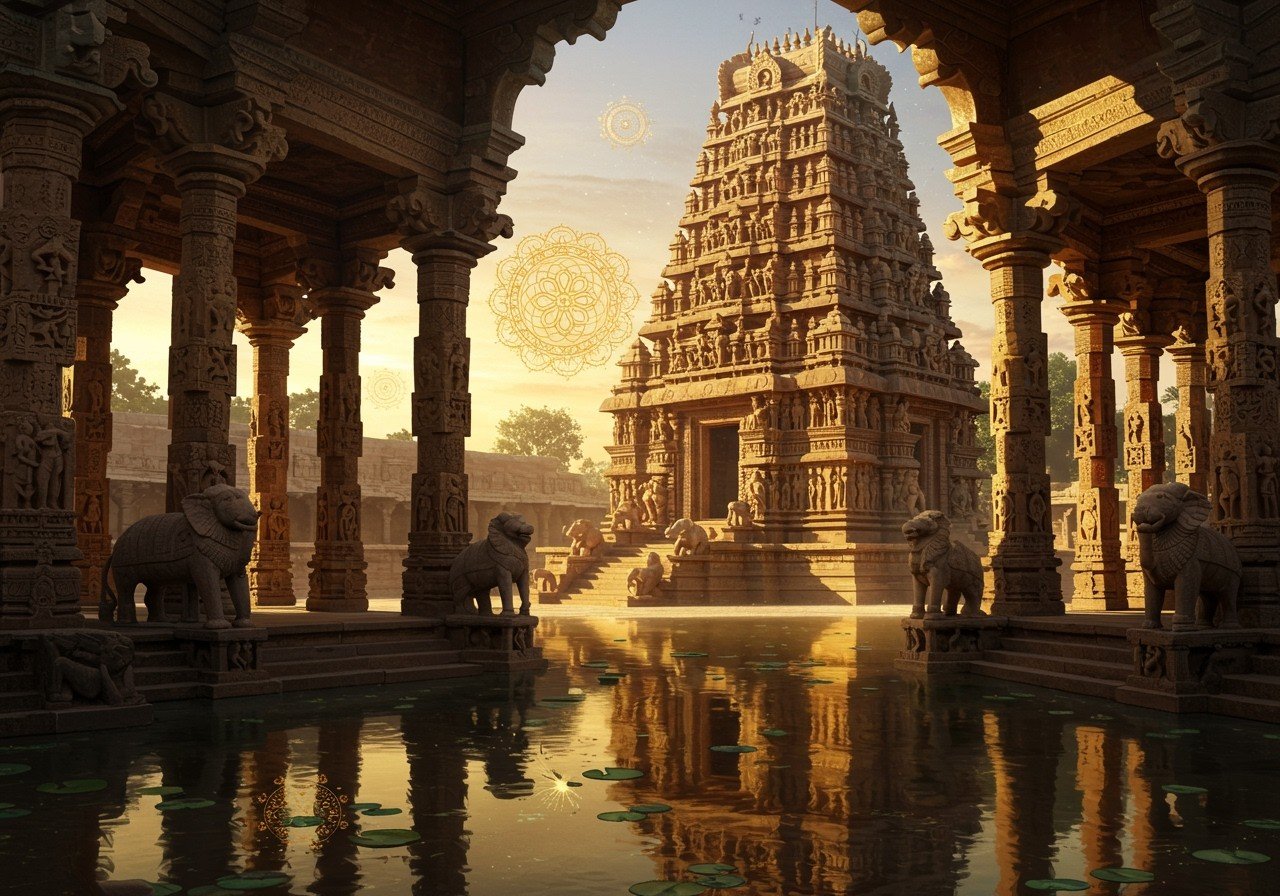
Journey to the heart of Telangana and uncover the architectural wonders of the Kakatiya Dynasty, a period spanning 1163-1323 CE. This blog post delves into the intricate designs, historical significance, and cultural essence of the structures built by this dynasty, offering a glimpse into a bygone era. We’ll explore how these monuments preserve tradition while inspiring modern innovation.
Historical Background
Origins and Timeline of the Kakatiya Dynasty
The Kakatiya Dynasty reigned from the 12th to the 14th century CE in the Deccan region. The dynasty’s rule, particularly under Ganapati Deva and Rudrama Devi, significantly shaped the architectural landscape. The socio-political climate and Telangana’s strategic geographical location played crucial roles in their construction endeavors.
Key Architectural Features
Distinctive Elements in Kakatiya Architecture
- Locally Sourced Materials: The Kakatiyas skillfully utilized locally available granite and sandstone, showcasing their resourcefulness and connection to the land. This choice also contributed to the unique aesthetic of their structures.
- Intricate Carvings: Kakatiya architecture is renowned for its intricate carvings depicting deities, animals, and scenes from mythology. These detailed carvings add a layer of narrative and symbolism to the structures.
- Unique Structural Elements: Star-shaped platforms and pillars are distinctive features of Kakatiya temples, showcasing their innovative architectural design. These elements add both visual appeal and structural integrity.
- Influences and Innovations: While influenced by earlier dynasties like the Chalukyas, the Kakatiyas developed their own distinct style. Their innovative irrigation systems and tanks demonstrate their engineering prowess.
Significant Monuments
Prominent Structures Built by the Kakatiya Dynasty
- Warangal Fort: This fort is notable for its massive stone gateways, known as ‘Kakatiya Kala Thoranam’. These impressive structures served as both defensive fortifications and symbolic entrances.
- Thousand Pillar Temple (Hanamakonda): Known for its elaborate pillars and detailed sculptures, this temple stands as a testament to the Kakatiyas’ artistic and engineering skills. Its intricate design and sheer scale are awe-inspiring.
- Ramappa Temple (Palampet): A UNESCO World Heritage Site, the Ramappa Temple is renowned for its unique floating bricks and intricate carvings. This temple showcases the dynasty’s advanced understanding of engineering and artistry.
Learn more about temple architecture. - Other Notable Sites: While less prominently attributed to the Kakatiyas, the Bhadrachalam Temple and Medak Cathedral hold architectural significance in the region. They represent the continuation of architectural traditions through different periods. Explore more cultural heritage journeys.
Engineering Techniques
Advanced Methods Used by the Kakatiya Dynasty
- Precision Stonework: The Kakatiyas demonstrated remarkable precision in stone cutting and placement, resulting in structures that have stood the test of time. Their mastery of stonework is evident in the intricate details and structural integrity of their buildings.
- Water Management Systems: The dynasty’s advanced water management systems, including step wells and irrigation tanks like the Kakatiya Canal and Pakhal Lake, highlight their ingenuity and foresight. These systems ensured a sustainable water supply for agriculture and daily life.
- Structural Stability and Durability: Kakatiya structures have demonstrated remarkable stability, withstanding centuries of weathering and natural events. The use of iron dowels further enhanced the durability of their constructions.
Cultural and Religious Significance
Cultural Essence Reflected in Kakatiya Architecture
- Temples as Social Hubs: Temples served as vital centers for social and religious gatherings, fostering community bonds and cultural exchange. They were not merely places of worship but also important social spaces.
- Artistic Representations of Tradition: The sculptures and carvings found in Kakatiya temples often depict local folklore and traditions, providing valuable insights into the cultural fabric of the time. These artistic representations preserve stories and beliefs for future generations.
- Patronage of Art and Culture: The Kakatiya rulers actively promoted art and culture, fostering a vibrant creative environment. Their patronage led to the flourishing of various art forms and architectural styles.
- Religious Inclusivity: Kakatiya architecture demonstrates a degree of religious inclusivity, accommodating both Jain and Shaiva influences. This suggests a tolerant and diverse religious landscape during their reign.
Preservation and Modern Relevance
Efforts to Preserve Kakatiya Monuments Today
- Conservation Initiatives: Organizations like the Archaeological Survey of India (ASI) and UNESCO play a crucial role in preserving these historical sites. Their efforts ensure that these architectural marvels are protected and maintained for future generations. Discover more about architectural legacies.
- Ongoing Challenges: Preserving ancient structures comes with its own set of challenges, including weathering, natural disasters, and human activity. Continuous efforts are needed to address these challenges and ensure the long-term preservation of these invaluable monuments. Find answers to frequently asked questions about cultural heritage.
Poojn.in: Connecting You to Kakatiya Heritage
Poojn.in offers a unique opportunity to connect with the rich cultural heritage of the Kakatiya Dynasty. We provide a curated selection of authentic puja items, handcrafted with traditional techniques reminiscent of the Kakatiya era.
- Brass and Copper Items: Explore our collection of pure copper and brass kalash sets, deepam, aarti items, and puja thalis, inspired by Kakatiya temple motifs. Discover our brass collection.
- Temple Bells: Enhance your puja experience with our traditionally crafted temple bells. Browse our selection of ritual items.
Poojn.in offers detailed information on the usage and significance of each item, ensuring an authentic and meaningful experience. We cater to both individual and institutional orders, providing convenient doorstep delivery across India.
Conclusion
The Kakatiya Dynasty’s architectural marvels stand as a testament to their ingenuity and cultural richness. By exploring these monuments and engaging with platforms like Poojn.in, we can appreciate and preserve this invaluable heritage for generations to come.


